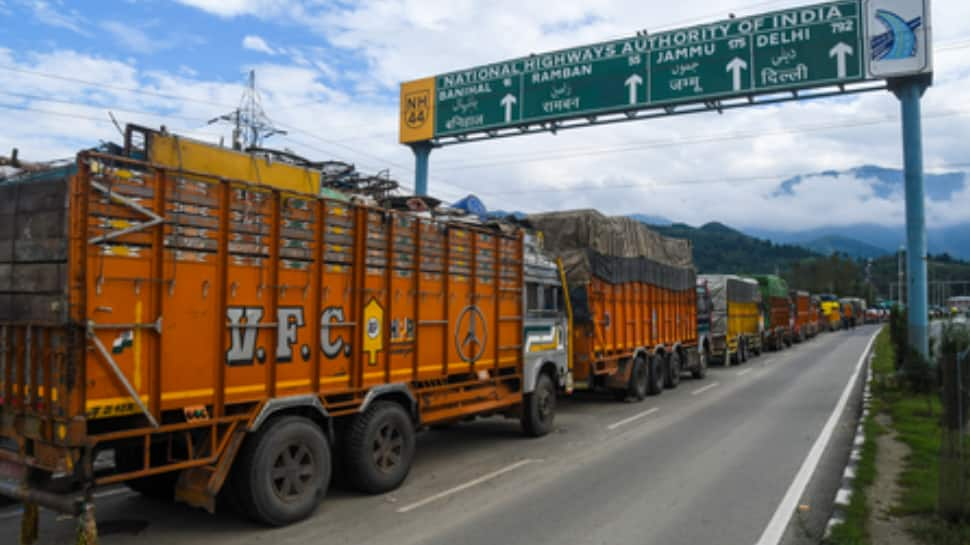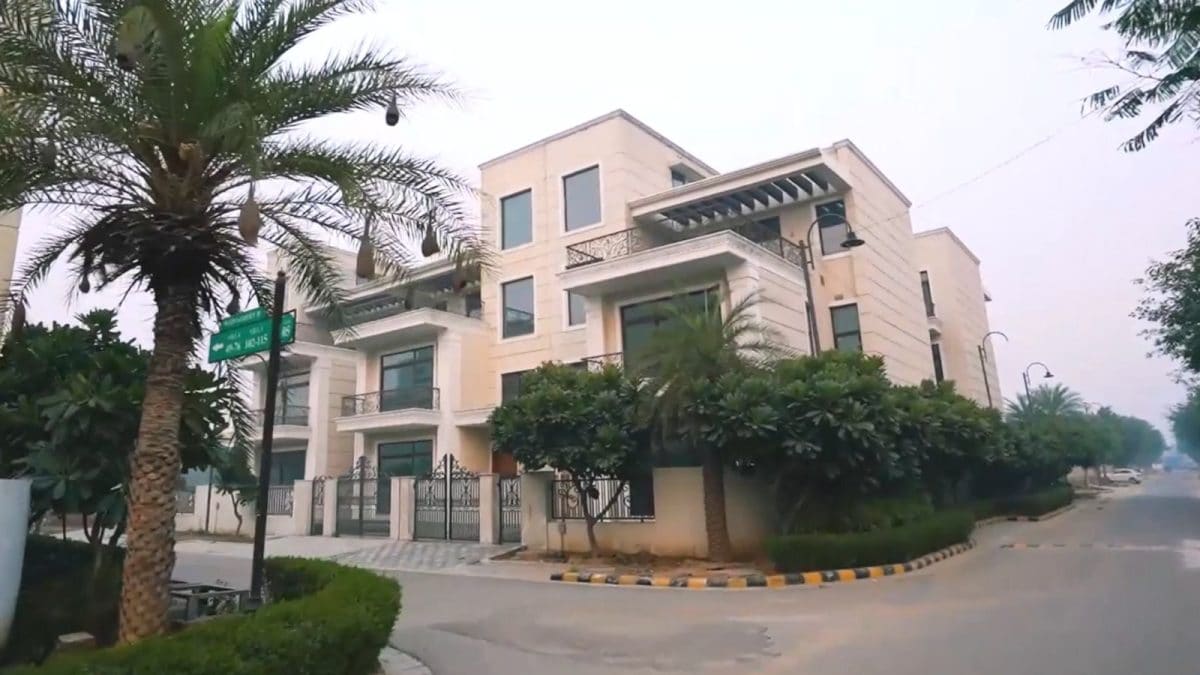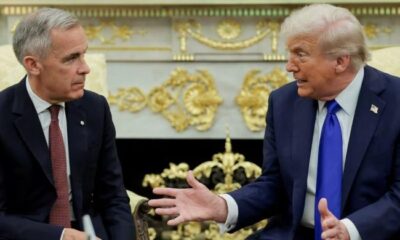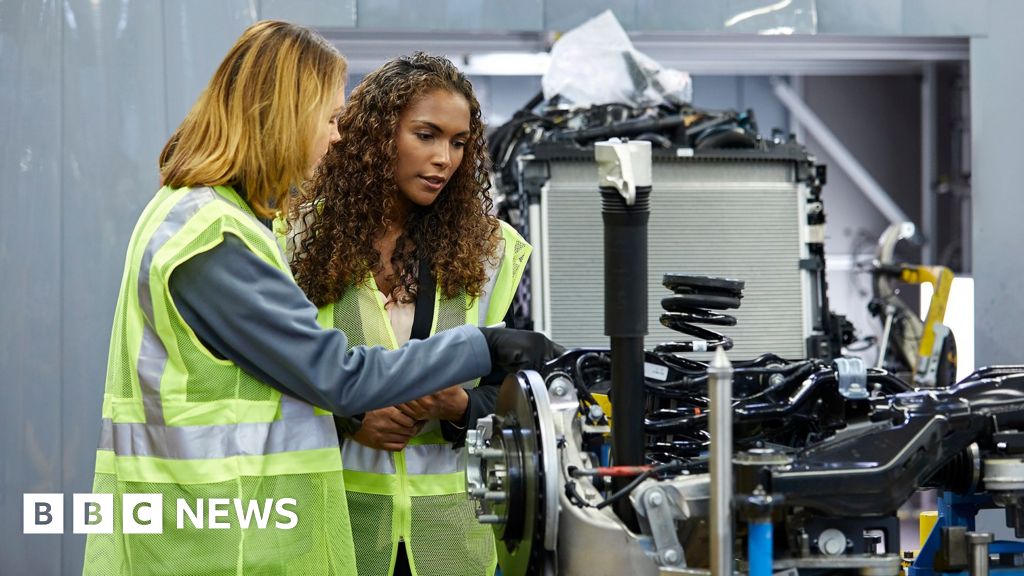Business
Saved Rs 2,062 Crore In Cost Of Toll Collection In FY2024-25: NHAI

New Delhi: The cost of toll collection came down from Rs 4,736 crore in FY 2023-24 to Rs 2,674 crore in FY 2024-25, resulting in savings of Rs 2,062 crore for NHAI, the Ministry of Road Transport and Highways said on Thursday. In percentage terms, the cost of toll collection decreased from 17.27 per cent in FY 2023-24 to 9.27 per cent in FY 2024-25.
The ‘cost of toll collection’ is the difference between the Toll Fee collected by the tolling agencies and the amount remitted to NHAI at public-funded toll plazas. In FY 2023-24, total toll collected by the toll agencies amounted to Rs 27,417 crore, out of which about Rs 22,681 crore were remitted to NHAI.
However, in FY 2024-25, the toll agencies collected a total of about Rs 28,823 crore as toll fees, out of which around Rs 26,149 crore were remitted to NHAI.
The savings in cost of toll collection resulted primarily due to various initiatives taken by NHAI, like close monitoring of current contracts, deletion of provision for deemed extension of three months, timely bidding, ensuring the maximum contracts for one-year duration are awarded and short-term contracts of three months are minimised.
Moreover, measures were taken to drastically reduce short-term three-month contracts, limiting only three premature termination requests during a financial year and restricting the same contractor in bidding of the toll plaza, for which he submitted the premature termination request.
Also, NHAI has been regularly engaging with the ‘All India User Fee Collection Federation’ to address issues and challenges faced by the toll collection agencies to build confidence and increase participation in toll bids.
According to a ministry statement, the timely release of performance security (cash part) and bank guarantees of the toll collection agencies further enhanced their bidding capabilities, resulting in higher bid amounts.
Apart from this, to avoid any windfall gains to the toll collection agencies, a ‘Windfall Gain’ clause was also introduced in the agreements, under which the contract of the toll collection agency can be terminated if the moving average of toll collection in the last 15 days is more than 40 per cent of the remittance paid to NHAI.
Business
Security concerns over system at heart of digital ID

The government is facing questions over whether the system at the heart of its plans for digital ID can be trusted to keep people’s personal data secure.
Digital ID will be made available to all UK citizens and legal residents but will only be mandatory for employment, under the government’s proposals.
Full details of how the system will work have yet to be announced but Prime Minister Sir Keir Starmer has insisted it “will have security at its core”.
It will be based on two government-built systems – Gov.uk One Login and Gov.uk Wallet.
One Login is a single account for accessing public services online, which the government says more than 12 million people have already signed up to.
By this time next year that might be as many as 20 million, as people registering as company directors will have to verify their identity through One Login from 18 November.
Gov.UK Wallet has not yet been launched but it could eventually allow citizens to store their digital ID – including name, date of birth, nationality and residence status, and a photo – on their smartphones.
Users will need a Gov.UK One Login to access the wallet.
Last month, the government launched a digital identity card for military veterans to test the concept.
The government hopes to avoid security issues by keeping the personal details to be accessed through One Login in individual government departments rather than in a single, centralised database.
But veteran civil liberties campaigner and Conservative MP David Davis has raised concerns about potential flaws in the design and implementation of One Login that he says could leave it – and the new digital ID scheme – vulnerable to hackers.
Speaking in a Westminster Hall debate earlier this month, he said: “What will happen when this system comes into effect is that the entire population’s entire data will be open to malevolent actors – foreign nations, ransomware criminals, malevolent hackers and even their own personal or political enemies.
“As a result, this will be worse than the Horizon [Post Office] scandal.”
Davis has written to spending watchdog the National Audit Office calling for an “urgent” investigation into the cost of One Login, which he says is certain to rise above the £305m already earmarked for it.
In his letter, the MP highlights a 2022 incident, in which it was found that the One Login system was being developed on unsecured workstations by contractors without the required security clearance in Romania.
Davis also points out that One Login does not meet the government’s own requirements to be classified as a safe and trusted identity supplier.
The government has blamed a supplier for allowing its Digital Identity and Attributes Trust Framework certification to lapse earlier this year and says it is working towards it being restored, which will happen “imminently”.
Separately, Liberal Democrat technology spokesman Lord Clement-Jones has questioned whether One Login meets National Cyber Security Centre standards.
The peer says he has been speaking to a whistleblower, who claims that the government has missed the 2025 deadline set out in its national cyber security strategy for hardening “critical” systems against cyber attacks.
Ministers deny this but the Lib Dem peer said he had been told by an official that One Login would not pass the required security tests until March 2026.
The whistleblower also highlighted an incident from March this year, when a so-called “red team” tasked with simulating a real life cyber attack was reportedly able to gain privileged access to One Login systems.
The Department for Science, Innovation and Technology (DSIT) says it is unable to give details of the red team exercise for security reasons but says claims that its systems were penetrated without detection are false.
DSIT officials also assured Lord Clement-Jones that the subcontractors in Romania were “a handful of people” none of whom had access to production “and all code was checked”.
The department says all members of the team working on One Login use “corporately managed” devices which are monitored by a security team to detect any malicious activity.
But Lord Clement-Jones told the BBC he was not convinced by the department’s assurances.
He said the track record of successive governments of running One Login and other systems “should give us all no confidence at all that the new compulsory digital ID, which will be based on them, will ensure that our personal data is safe and will meet the highest cybersecurity standards”.
Last week, the prime minister handed overall control of the digital ID scheme to the Cabinet Office, which is headed by one of his most trusted and senior ministers Darren Jones, reflecting its importance to the government.
But the Government Digital Service, which is part of DSIT, will retain responsibility for design of the project.
A DSIT spokesperson said: “Gov.UK One Login continues to deliver for citizens across the UK.
“One Login is now home to more than 100 services and has been used by more than 12 million people – representing almost a sixth of the UK population.
“One Login follows the highest security standards used across government and the private sector and is fully compliant with UK data protection and privacy laws.
“The system undergoes regular security reviews and testing, including by independent third-parties, to ensure security remains strong and up to date.”
Business
Move Over Dwarka Expressway, This Gurugram Area Is Hot Property For Homes Now

Last Updated:
Residential prices in this area are presently in the range of Rs 10,000-12,000 per sq ft, making it almost 2.3 times more affordable than other premium micro-markets in Gurugram

Sector 63A, located along the Golf Course Extension Road, is home to projects like Anant Raj Estate by Anant Raj Limited.
The dream of owning a home in Gurugram has long been associated with soaring property prices and premium localities like Golf Course Road or Dwarka Expressway. However, a new report by global real estate consultancy Colliers has brought a fresh perspective; Sohna, once known as an affordable pocket on the city’s outskirts, has now outperformed Gurgaon’s most expensive corridors in terms of property price growth.
According to the Colliers report, Sohna Road has topped the list of the five fastest-growing micro-markets in Gurgaon. Property values in the region are projected to rise by nearly 1.6 times in the coming years, making it one of the most promising investment destinations in the National Capital Region (NCR).
The report highlights that Sohna commands the highest share of graded housing units, about 73% of the total in NCR. The micro-market is witnessing a steady rise in new residential supply, alongside regions such as Golf Course Road, Golf Course Extension Road, Southern Peripheral Road (SPR), and Dwarka Expressway.
Experts attribute Sohna’s rise to massive infrastructure developments in the region. The upcoming IMT Sohna industrial hub, enhanced connectivity through the Delhi-Mumbai Expressway, proximity to National Highway networks, and the proposed dual airport linkage have all contributed to the area’s rapid transformation. Moreover, the 10,000-acre Aravalli Jungle Safari project is expected to further enhance Sohna’s appeal as a green and lifestyle-centric investment zone.
The location also enjoys strong accessibility; just about 40 minutes from Gurugram’s Cyber Hub and Golf Course Road, and under an hour from Delhi’s Indira Gandhi International (IGI) Airport.
Currently, Sohna houses around 8,200 residential units, of which nearly 45% remain available in the primary market. Analysts say this reflects a healthy absorption rate and sustained buyer interest. Residential prices along the Sohna Expressway are presently in the range of Rs 10,000-12,000 per sq ft, making it almost 2.3 times more affordable than other premium micro-markets in Gurgaon.
Sohna Master Plan 2031
The ongoing development under the Sohna Master Plan 2031 envisions integrated residential, commercial, and industrial growth. The plan positions Sohna as a balanced hub catering to both affordable and mid-segment housing needs, complementing the high-end corridors such as Golf Course Extension and SPR.
Sohna’s growing industrial base, affordable housing options, and rapidly improving infrastructure are drawing both home buyers and investors seeking long-term appreciation.
Apart from Sohna, the top five growth corridors in Gurgaon include Golf Course Extension Road, Golf Course Road, Dwarka Expressway, and SPR. Among them, the Golf Course Extension Road continues to dominate the luxury segment, thanks to its connectivity with the Delhi-Mumbai Expressway, Sohna Road, and the Delhi airport.
Sector 63A, located along the Golf Course Extension Road, is home to projects like Anant Raj Estate by Anant Raj Limited, which epitomise premium urban living in the NCR.
October 31, 2025, 18:29 IST
Read More
Business
Forex update: India’s reserves fall $6.9 bn to $695.35 bn; gold and foreign currency assets decline – The Times of India

India’s foreign exchange reserves fell by $6.93 billion to $695.35 billion during the week ended October 24, according to data released by the Reserve Bank of India (RBI) on Friday.In the previous reporting week, overall reserves had risen by $4.50 billion to reach $702.28 billion, PTI reported.The RBI data showed that foreign currency assets (FCA), the largest component of the forex kitty, declined by $3.86 billion to $566.55 billion in the week ended October 24. Expressed in dollar terms, the FCA includes the impact of appreciation or depreciation of non-US currencies such as the euro, pound and yen.The value of gold reserves dropped by $3.01 billion to $105.54 billion during the week, while the Special Drawing Rights (SDRs) decreased by $58 million to $18.66 billion, the data showed.India’s reserve position with the International Monetary Fund (IMF) rose slightly by $6 million to $4.61 billion in the reporting week, the RBI said.
-

 Politics6 days ago
Politics6 days agoTrump slams ‘dirty’ Canada despite withdrawal of Reagan ad
-

 Tech1 week ago
Tech1 week agoDefect passivation strategy sets new performance benchmark for Sb₂S₃ solar cells
-

 Business1 week ago
Business1 week agoJLR shutdown after cyber hack drives slump in UK car production
-

 Sports1 week ago
Sports1 week agoAlleged mob ties in NBA scandal recall La Cosa Nostra’s long shadow over sports
-

 Tech1 week ago
Tech1 week agoTurning pollution into clean fuel with stable methane production from carbon dioxide
-

 Business1 week ago
Business1 week agoAssaults on rail network more than triple in 10 years
-

 Sports1 week ago
Sports1 week agoNBA legend Chauncey Billups, Heat’s Terry Rozier arrested as part of FBI gambling probe
-

 Tech1 week ago
Tech1 week agoThe ‘Surge’ of Troops May Not Come to San Francisco, but the City Is Ready Anyway






